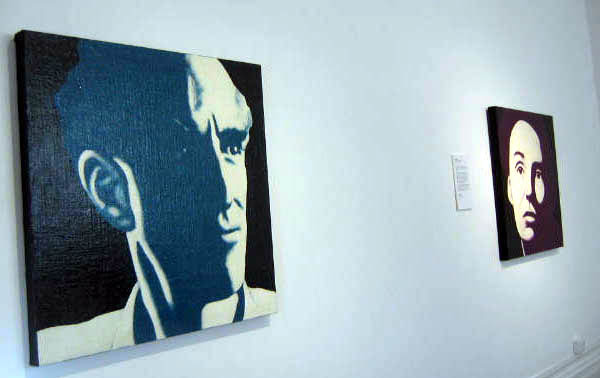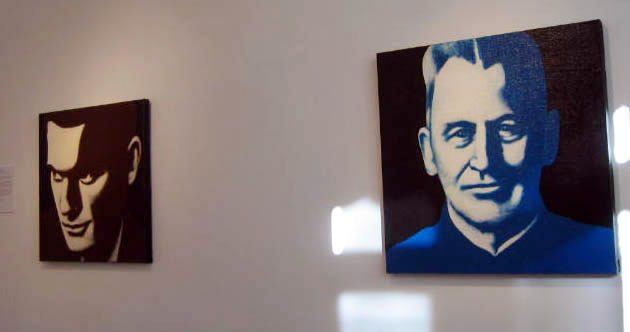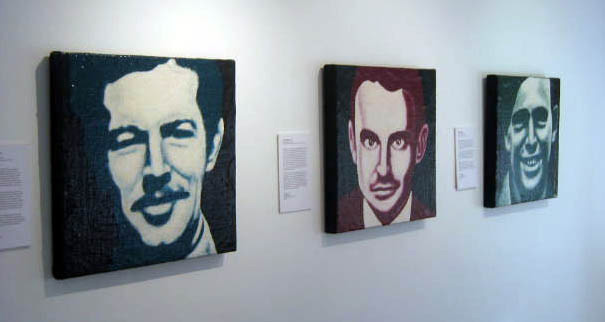|
|
|
|
EXILES - Rudolf Boelee
PaperGraphica, 14 May - 9 June, 2007
Forrester Gallery, Oamaru, 7 March -27 April, 2008
Southland Museum & Art Gallery, Invercargill, 3 May-22 June, 2008
Eastern Southland Gallery, Gore, 28 June - 3 August, 2008
Text: Marian Maguire
Installation Images: Rudolf Boelee
Charles Brasch, Robin Hyde, Dan Davin, Rewi Alley, James Bertram, Geoffrey Cox, John Mulgan.
Not all of these seven New Zealanders are widely known; their individualism and idealism sometimes put them at the fringes of colonial culture. They have been selected by the artist for their ability to see beyond the confines of that culture. All of them travelled, engaged with the world beyond these shores, exiled themselves. With the advantage of education, they then spoke thoughtfully and eloquently about the human condition.
|
|
|
 |
|
Most, apart from Rewi Alley, were born at about the time of the First World War so their experiences through the Depression and the Second World War had a profound affect on them. But the link is more than generational. Highly intelligent, sensitive and observant they used their creativity to promote the greater good; in most cases, through literature.
Rudolf Boelee was born in Holland in 1940 so has a personal understanding of how world events can impact upon the lives of people. Seeing his homeland ravaged by war he chose to live in this country, the New Land, in a youthful search for utopia. In selecting these seven Exiles he identifies the need to look beyond regionalism at the wider issues for humanity.
Rudolf Boelee has painted these portraits as bold chiaroscuro heads that completely dominate the coarse weave of the hessian surface. Each portrait is painted from a photograph. The backgrounds are dark; solid black. Light radiates off the facial planes in sharp contrast. Facial shadows are painted in a single flat colour, a different colour for each person, so although the images are bold, almost confrontational, the features are flattened, increasing the drama. The impression of each person, the idea of them, resounds more strongly than their physical reality.
|
|
|
|
 |
|
Like many other works by Boelee the paintings flash like stills from film noir and create curiosity about the moments before and afterwards. Each of the Exiles had a full and active life and, aside from Geoffrey Cox, have all died. Despite the solidity of their achievements it is hard not to think that their lives, albeit intense, were fleeting.
In the words of James Bertram, "Hard to explain now just how strongly we all felt in those days. But it wasn't just politics, rather, a sort of evangelical sense of mission, of not allowing oneself to become contaminated and absorbed into the establishment".
|
|
|
|
 |
|
|
 |
|
|
|
|
|
|
|
|
|